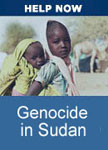Debt Relief
From the Christian Science Monitor, a decent explanation of the weekend's debt-relief deal:
This weekend's $40 billion debt cancellation agreeded to by rich-nation finance ministers will, for instance, enable Zambia to hire 7,000 new teachers. Likewise, Tanzania will no longer spend 12 percent of its annual budget on servicing its debts. Instead, it could build new hospitals and roads.
In all, 18 nations - 14 of them in Africa - with 296 million people will be debt-free. Eventually, a total of 38 nations with 552 million people may get full debt relief.
For all the impressive figures, though, the deal strikes a middle ground. For some it's too small: At most, it cancels less than one-sixth of Africa's $295 billion debt - and leaves out crucial countries like Nigeria.
For others, it's too risky: By erasing bad debts - and allowing struggling nations to apply for new loans - it could spark a new cycle of dependency.
Either way, it does provide a respite from poverty's pressures. And it may help countries lift themselves up through better education, stronger agriculture, and expanded trade. "In theory, it primes the pump," says Stephen Hayes of the Corporate Council on Africa in Washington.
But who pays? Consider three things:
• First: In the short term, it's not all that expensive. The US will pitch in up to $1.75 billion over 10 years. That's its share of a pledge by rich nations to cover $16.7 billion in debt repayments the 18 countries would have made.
• Second: One of the larger bills - some $6 billion - will be paid by the International Monetary Fund (IMF). It's one of the global institutions to whom poor nations owe debt. And under the deal, it's supposed to cover those debts from its own "existing resources."
• Third: Crunch time will reportedly come after 2008, when the US and other G-8 nations (Britain, Canada, France, Germany, Italy, Japan, and Russia) will have to pony up billions to cover the amount owed to two other big lending institutions: The World Bank and the African Development Bank. The G-8 ministers promised to "cover the full costs" of the loans.
But one of the dangers, experts say, is that rich nations won't fully replenish global lenders' coffers, which could trim the size of future loans. In theory, however, poor countries won't need to borrow so much, because the debt deal will boost their economies.
As for the poor nations, the deal is expected to save them a total of about $1.5 billion in debt payments each year. They're supposed to spend this on education, healthcare, agriculture, and infrastructure. According to the CIA World Factbook, the 18 governments' total spending was $23.5 billion in 2004. So the $1.5 billion represents a sizable, though not enormous, amount of freed-up cash.
In Tanzania, a previous debt-relief deal helped end school fees, enabling 1.5 million extra children to attend classes, says DATA, a debt-relief group in Washington.






0 Comments:
Post a Comment
<< Home